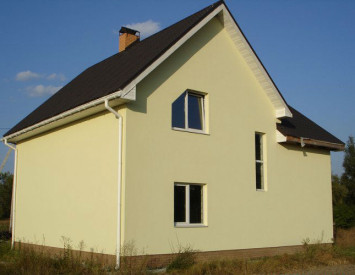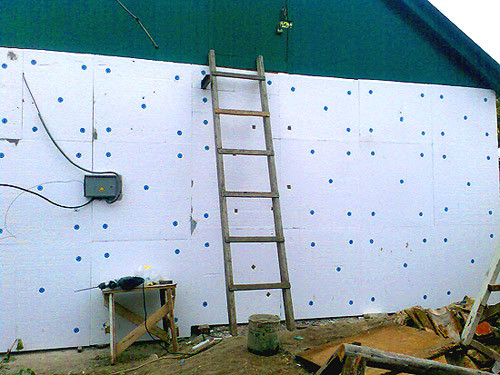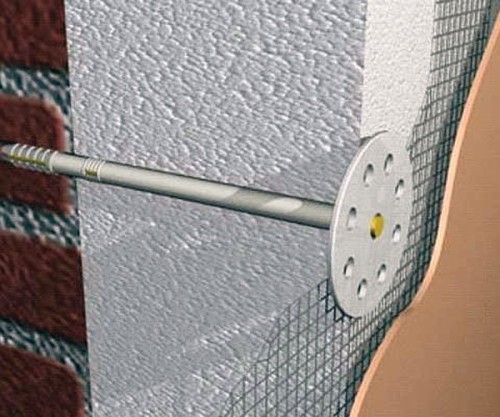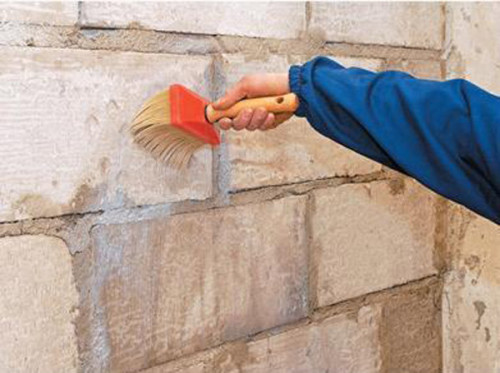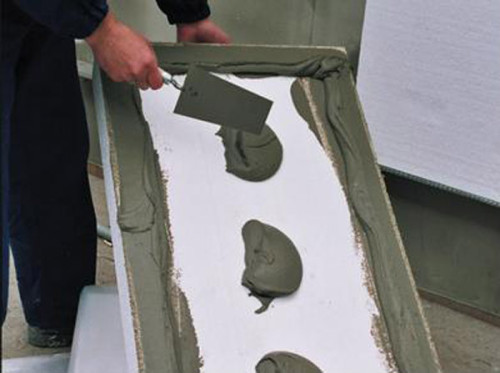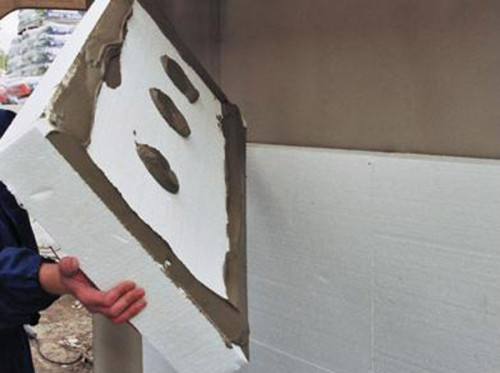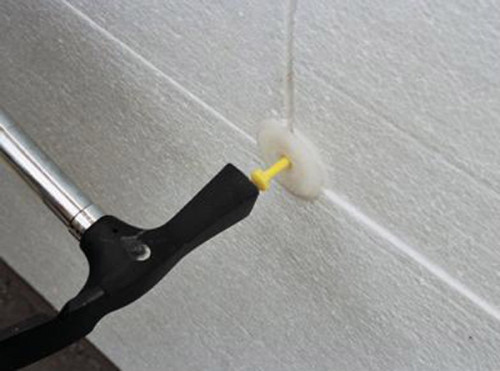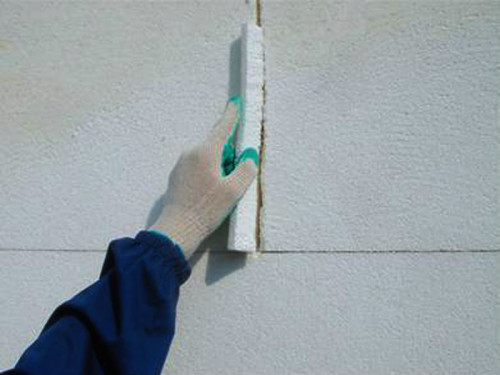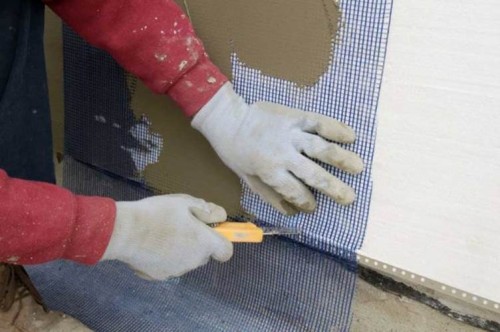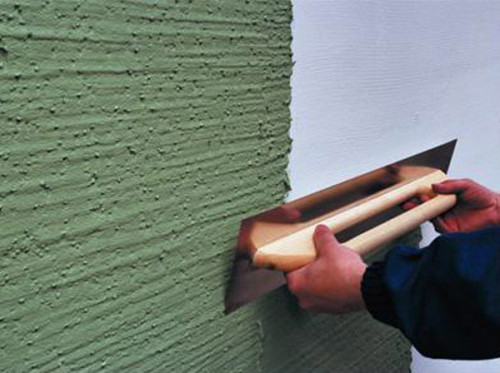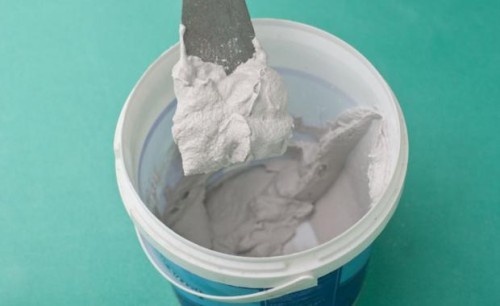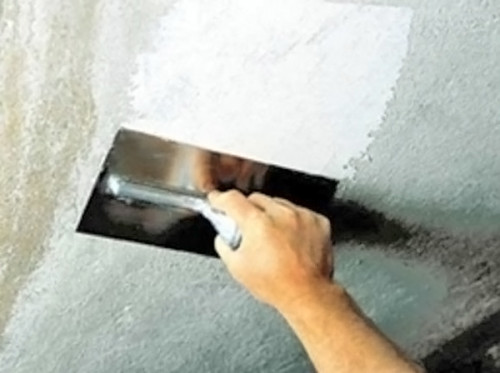Perform a qualified insulation of the facade of the house from the foam on its own very real. The task of any insulation to prevent heat exchange between the room and the external environment. Insulated foam, the room acquires the quality properties of the thermos. In the cold time, warm air does not cool for a long time, and in the summer the coolness is saved. This significantly affects utility bills.
Content
- Types of foam for insulation at home
- Calculation of materials for insulation facade house foam
- Tools and materials for the insulation of the facade of the house
- Preparatory work on the insulation of the private house by foam
- Technology of mounting foam plates on the facade of the house and plaster
- Warm and plastered facade of the house
- Video: insulation facade foam with her own hands
Heat leaks in non-warmed room reach 35%. Upon compliance with the simple technology of insulation of the facade of the house with foam, all work can be performed with your own hands. The process of insulation of the facade of the house by foam, is presented on the video in the final part of the article.
Types of foam for insulation at home
Polyfoam, expanded polystyrene and extruded refer to the same group of insulation. In composition, they are identical, but differ only in density, heat transfer and price. Methods of installation and installation do not have differences.
- The expanded polystyrene is called foam. Available in plates of 1x1 and 1x0.5 m and 2 to 10 cm thick. For the insulation of the facade of the house, depending on the thickness of the walls, foam 4 - 5 cm thick is used. It will be varied in density. The most popular foams with a density of 25 to 50 units. The loose structures of foam plates with a low density have a tendency to absorb moisture. To eliminate this trouble, the surface of the foam is additionally processed by waterproofing mastic.
- Polystyrene foam or extruded polystyrene foam has a higher density and, accordingly, with the same with foam thickness of thermal insulating quality, it is higher. Some enterprises are equipped with an edge of polystyrene. This avoids the occurrence of cold beans on the joints.
Any of foaming for insulation of the house is not amenable to rotting, durable and practically does not absorb moisture. The combination of foam with other types of insulation is not a violation of technology.
Calculation of materials for insulation facade house foam
Deciding to insulate the facade of the private house with a foam, it is necessary to create a calculation. The calculation of the materials necessary for insulation is very simple.
- The length of the warmed wall is multiplied by height. The area of \u200b\u200bdoor and window openings is subtracted from the obtained area. Then the number of foam sheets is calculated. They are released in size 1x1 and 1x0.5 meters.
- Installation of sheets is made from the corner in a checker order. Calculate the required number of sheets of meter and half-meter size. On each leaf of the insulation there are 5 plastic dowels (builders call fungi, parachutes or umbrellas). Four dowels are driven by corners and one in the center.
- The consumption of adhesive mixture, dry plaster and putty depends on the thickness of the layer, brand and manufacturer. Material mesh material taking into account area in 1 m 2 With different thickness of the layer applied to the packaging.
For the reinforcing layer, you must purchase a fiberglass mesh. It is produced in rolls 1 meter width. The total area of \u200b\u200bthe reinforcing grid should correspond to the area of \u200b\u200bthe insulated surface.
Tools and materials for the insulation of the facade of the house
- Korchka or hammer.
- Topor.
- Construction level and plumb.
- Drill with a bump or perforator, bug along concrete and nozzle mixer.
- Kelma and spatula (80, 250 and 1200 mm).
- Roulette - 5 m and smooth rack (1.2 m).
- Grinding machine or grater with clips.
- Brush, roller or sprayer for primer.
- Mounting knife with retractable blade.
From materials purchased:
- foam 1x1m and 1x0.5 m;
- dry glue mix for foam;
- dry facade plaster;
- paktya mixture "Start" and "Finish";
- plastic dowels with a wide hat type "fungus";
- deep penetrating primer impregnation;
- plastic reinforcing mesh (80 - 140 density 5x5 * cell).
Preparatory work on the insulation of the private house by foam
- Dummbled bottoms, storm pipes, visors and other attached elements on the instended facade of the house. The old plaster from the walls is fried by a hammer or bladder. If necessary, for better grasp materials on the walls are applied oblique notch with an ax.
- The facade wall is aligned. The bulges are knocked down by a bladder or an ax, and the depressions and holes are closed. Close up of depression can be cement mortar, plaster or alabaster.
Lime whitewash is definitely removed. It can be scraped or washed with water.
Technology of mounting foam plates on the facade of the house and plaster
- In a bucket with a water drill with a mixer, glue for foam places. The solution is not too liquid. He should not crawl off the spatula and foam sheet. A meter leaf of the insulation is applied evenly 16-18 glue smears. The sheet is gripped tightly to the lower corner of the front wall and is aligned in all directions. The first sheet is checked by the level and fixed by plastic dowels. From above, a sheet of 1x0.5 meters is installed on it. The sheet is tightly pressed against the wall and fell by hand. Thus, the chess procedure for the installation of foaming will be set.
- By installing 7 - 12 sheets. Fix the sheets of dowels. Reducing the display of insulating sheets on the wall with the level, drill in the corners and in the center of each sheet of the hole. The tip of each plastic dowel creates a knife. It is important, otherwise it may not be disclosed and not inserted into the nest. The dowel is inserted into the hole and paws with a palm before sealing into the foam. A plastic spreading nail is inserted into the central hole of the dowel hats and clogged with a hammer. If at the same time the hat deepened by 3-4 mm into the foam, to zadach it with a glue solution.
Smooth seams between foam plates are labeled with a glue mixture. The gaps and wide inconsistencies are filled with foam trimming and sample. Sometimes slots and hard-to-reach places are placed by mounting foam.
- Reinforcing fiberglass grid is superimposed on the foam. The grid band is unwinding from top to bottom and cuts off with a mounting knife in size. The upper part is temporarily fixed by plastic carnations on the foam. The kneaded plaster is taken on a wide spatula and, removing a little solution with a small spatula, the grid is grabbed. Making several smears at the top of the grid, wake it in the middle from top to bottom. Then overclock the plastering mixture to the sides. When plastering in this way, the grid does not bet and there will be no folds. The next lane of the grid is exhibited with an adhesive 5 cm and is placed in the same way.
- If necessary, taking into account further finishing works, a thin to 8 mm is made or thick up to 40 mm layer of plaster. For a thick layer of plaster, a metal mesh is used. Disted plaster is covered deeply penetrating the primer mixture. The primer gluits the plaster layer, prevents the appearance of microcracks and the penetration of moisture.
Warm and plastered facade of the house
After insulating the house of the foam and finishing facade plaster, putty is made. Putty works are not always necessary. When finishing the facade with wild stone, ceramic tiles or siding they do not need. For whitening or painting the facade part it is necessary to make putty work.
- Dry starting spacing is stirred with water. Use a drill and mixer for this. The solution should resemble thick cream consistency. A small spatula (80 mm) putty is equally distributed over a wide (1200 mm) to the spatula. The putty mass is applied to the plastered facade and is evenly smoothed. The first layer is applied with a thickness of 3 - 4 mm. If necessary, align the wall or hide different flaws, a layer of putty can be thicker, or after drying, another layer is applied.
- Finish putty has a thinner dispersion structure. It is applied in the same way as the starting. But at the same time smoothed much more carefully. The cream spacure wall is treated with a grinding machine or manually with a special grater with clamps for replaceable abrasive. As an abrasive, it is not recommended to use sandpaper. Pores are quickly clogged, and sandpaper comes in disrepair. For rubbing putty, a metal or plastic grid is used.
The surface of the facade wall is impregnated with primer. To do this, brush, roller or sprayer applies. The rich wall is ready to paint.
